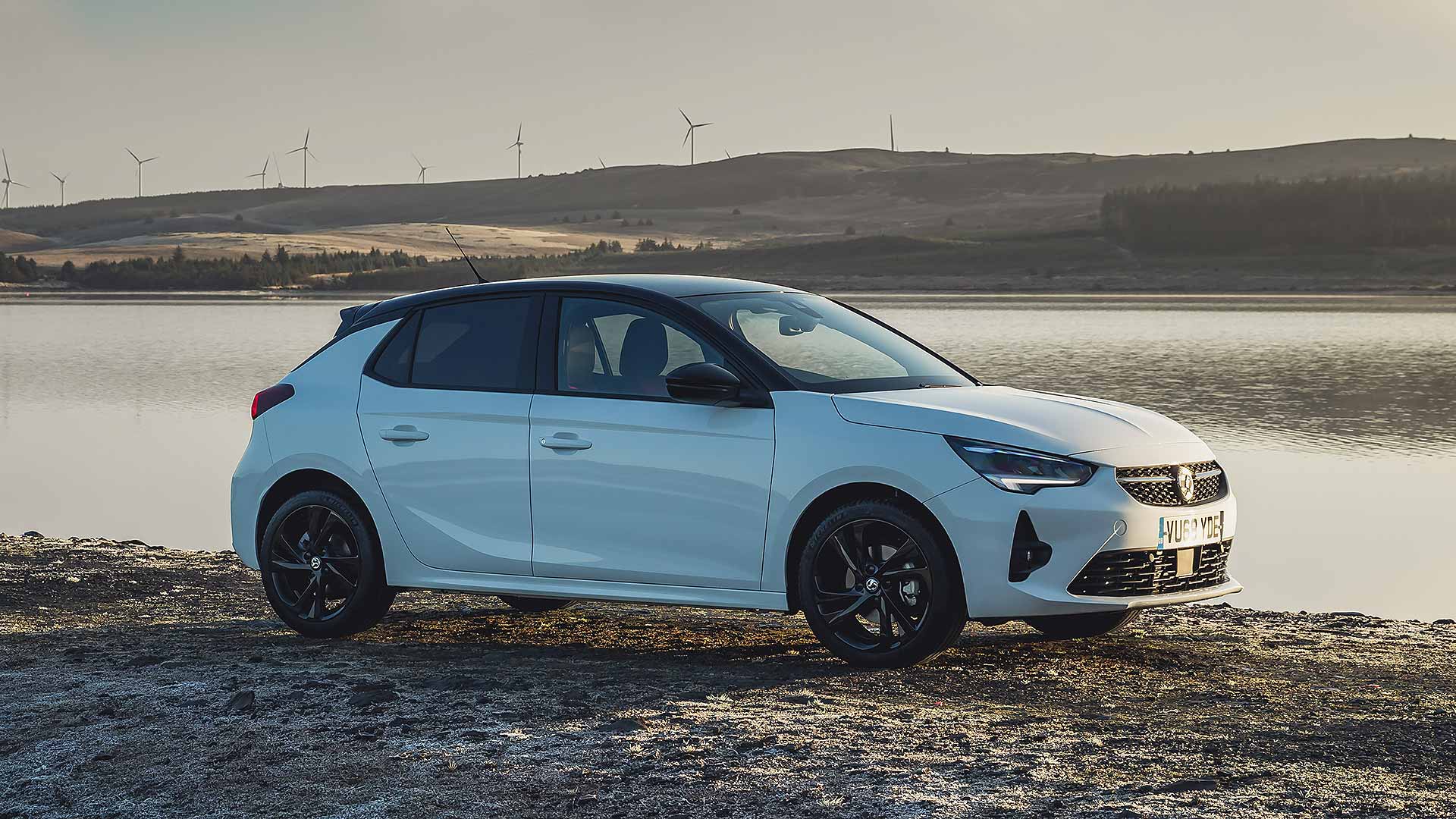
The current Vauxhall Corsa has ended its long run as a British best-seller. If such an aged car can achieve that, what can this smart-looking all-new one do? That’s what Vauxhall retailers will be looking forward to finding out as 2020 nears.
We have already driven it overseas, and this gave us a good insight into the all-new car’s strengths. (It genuinely is all-new too, developed using technology shared with new French owner PSA, in a break-neck two-year sprint). Now it’s time to see how it copes with the unique roads of the UK.

Although Vauxhall, unlike many small cars these days, offers a diesel-engined Corsa – and, in 2020, will launch the all-electric Corsa-e – the best-selling engine will be the 1.2-litre petrol. The cheapest is the non-turbo 1.2 75, but it’s the turbocharged 1.2T 100 that will sell best. We tried it in sportier SRi Nav guise.
Again, Vauxhall thinks the SRi variant might prove most popular, vying with the lead-in SE grade. Prices start from £18,700, £2,350 more than a comparable SE (all new Corsa are five-doors, and the £15,500 entry price looks good next to the cheapest Ford Fiesta at £16,495); it’s only available with the 1.2T 100 engine but, given the upgrades it has to its chassis, this makes sense.
Because, uniquely, SRi models gain extra bracing for the front suspension. Strut tower tie rods is an upgrade you only normally see in high-performance cars. Chief engineer Thomas Wanke says it makes the front end more rigid, improving on-centre steering feel and making the Corsa respond more positively, with less delay, to steering inputs.
SRi variants also get bolstered sports seats, dark-tint rear glass and roofliner, sporty red trim for the dash and unique front and rear bumpers. A black roof and A-pillars is standard too; taking them in body-colour is a no-cost option.
Notably, Vauxhall offers no optional extras for the Corsa, other than metallic paint and a spare wheel. Buyers instead choose packs: the base SRi can be upgraded to SRi Nav (as tested here) for £500, goodie-packed SRi Premium for £1,240, or SRi Nav Premium which combines both. Easier, more straightforward AND better value for money: the days of the optional extra may be numbered.
On the road

The 1.2T 100 engine is a likeable thing. It makes a smooth, throbby noise and has good pull from low revs. Despite being turbocharged, there’s barely any delay when you press the accelerator and it’s good at lugging up hills without needing to change down a gear. It’s quiet too.
It’s not really an engine that you’ll rev through, though. Power tails off over 5,000 rpm: somewhat counterintuitively, there’s sometimes actually a boost in power when you change up a gear. The gearbox is light and precise if you shift gently, but feels slack if you’re more forceful.
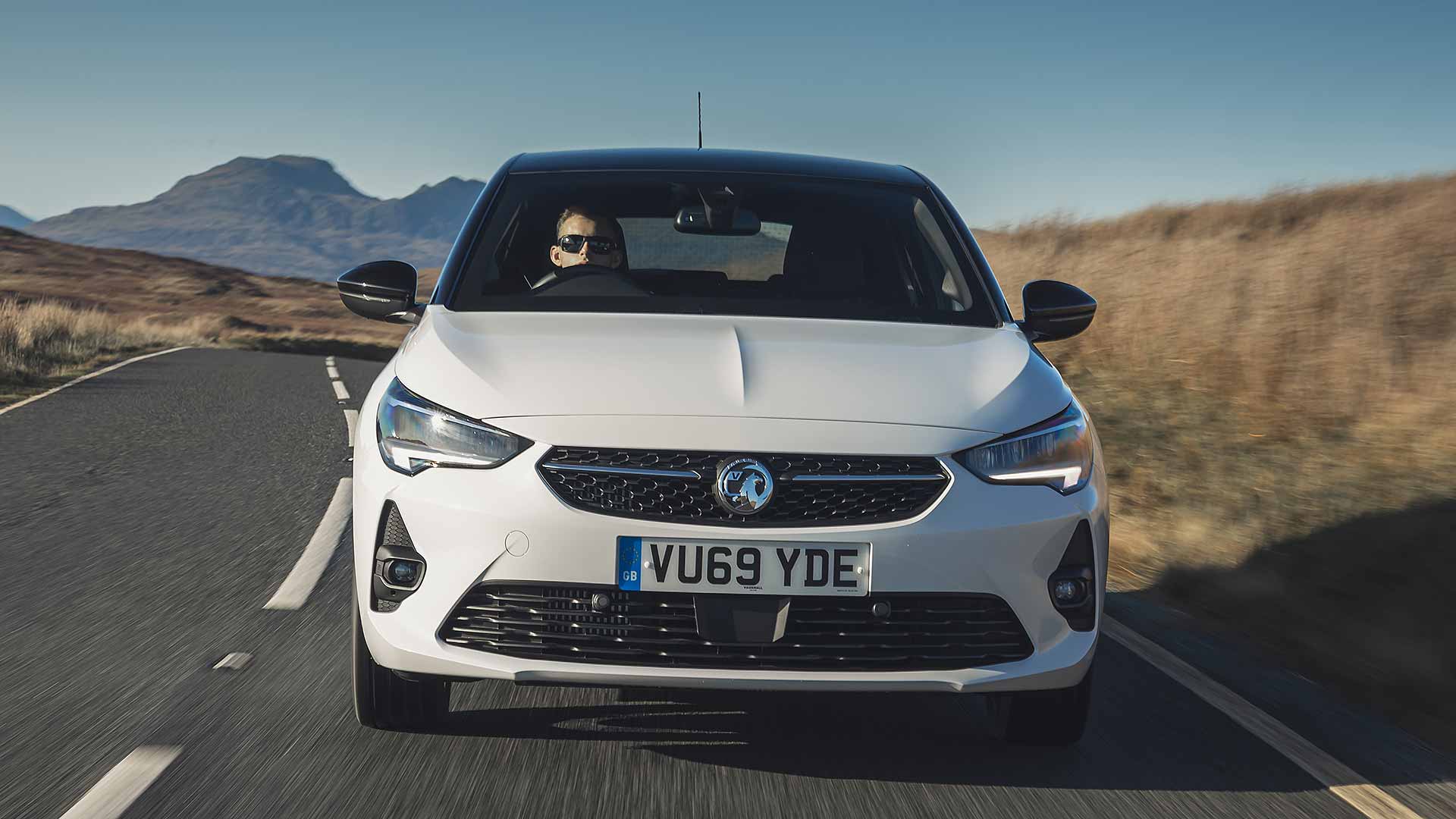
All Corsa SRi have 16-inch wheels (only Elite Nav and Ultimate Nav have 17-inch wheels). These are good for ride quality, with the new Corsa smoothing off the gritty roads around the Goodwood launch venue ably. The suspension is also nicely controlled, with a good blend of firm control and absorbency.
The suspension works quietly as well, which is good for refinement and gives a nice feeling of integrity. It’s as good as some bigger cars in this respect. And it handles neatly, with not too much body roll or sway in corners.
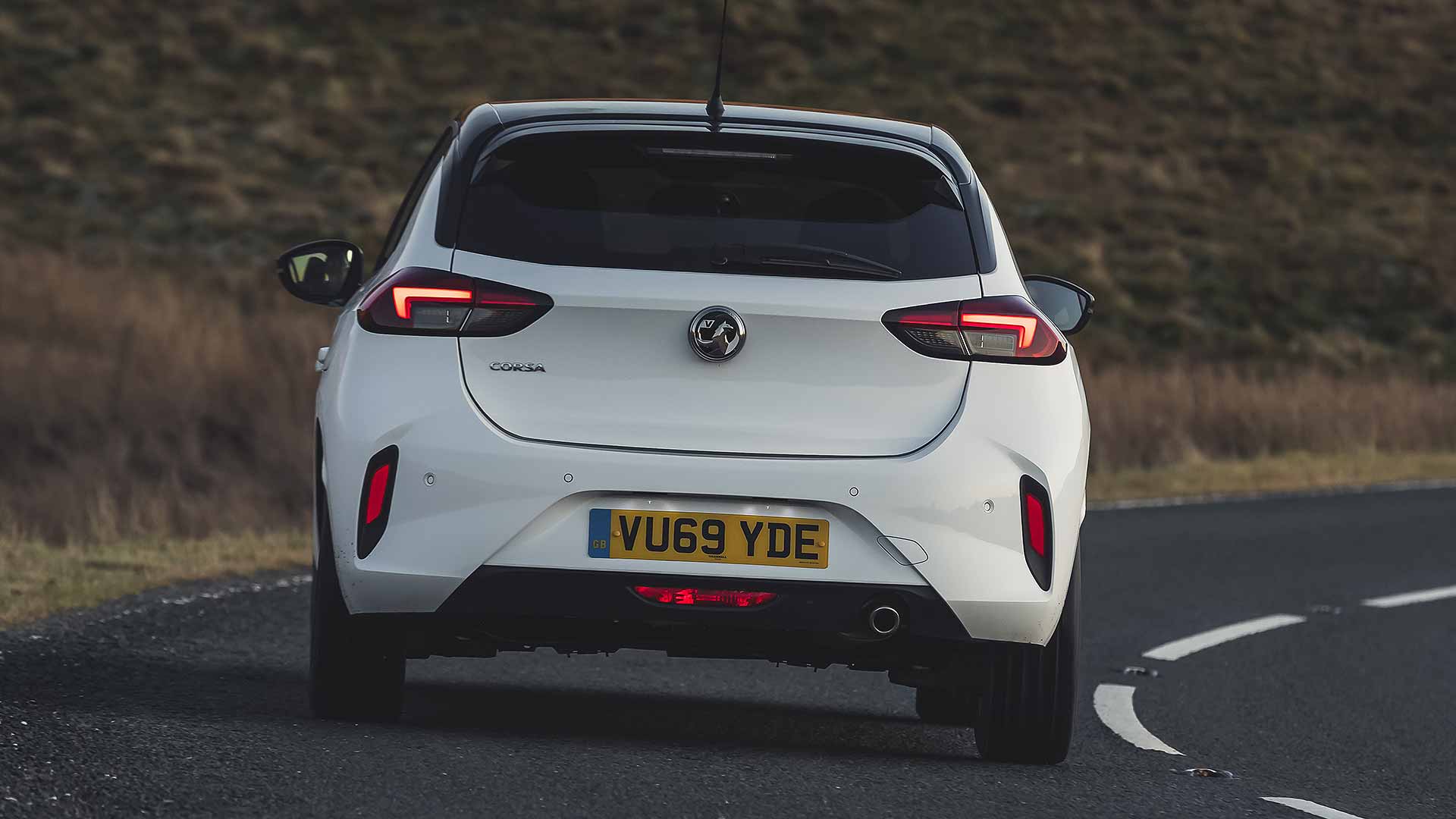
The steering does feel sharper and more precise than the alternative Ultimate Nav car we drove. It makes the Corsa SRi feel a wieldy little thing – not as engaging as a Ford Fiesta, sure, but still very good, and with a more comfortable and less tiring ride. It’s also night and day better than the old Corsa.
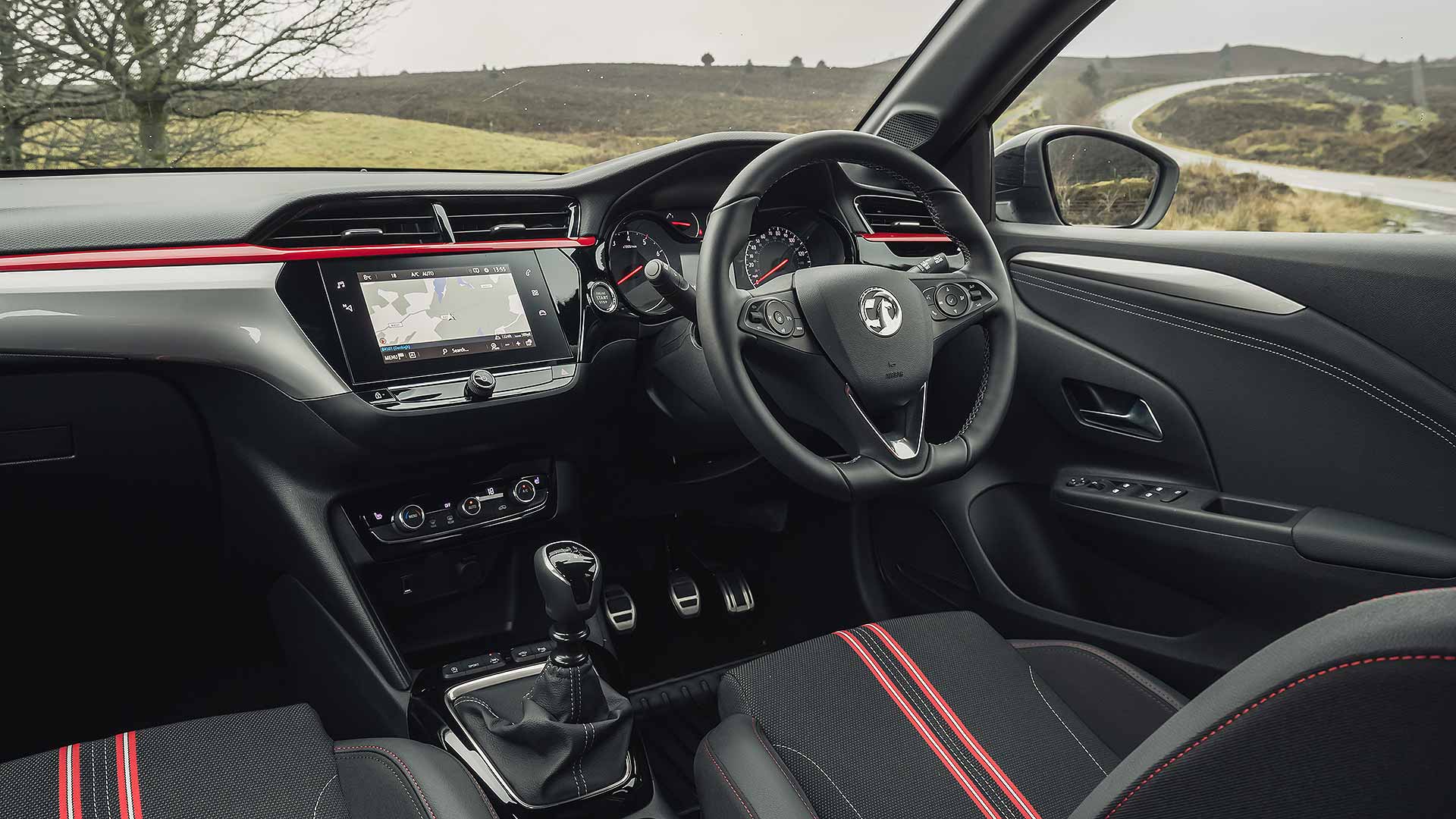
SRi seats are excellent, with broader seat bases than the regular cars, and chunky side bolsters. The moody black interior is sporty, with a bold red line that runs the full length of the dash. A 7-inch touchscreen is angled to the driver and looks upmarket; Apple CarPlay and Android Auto are standard. Fixtures and fittings are decent quality and the soft-touch dash top is nice to see.
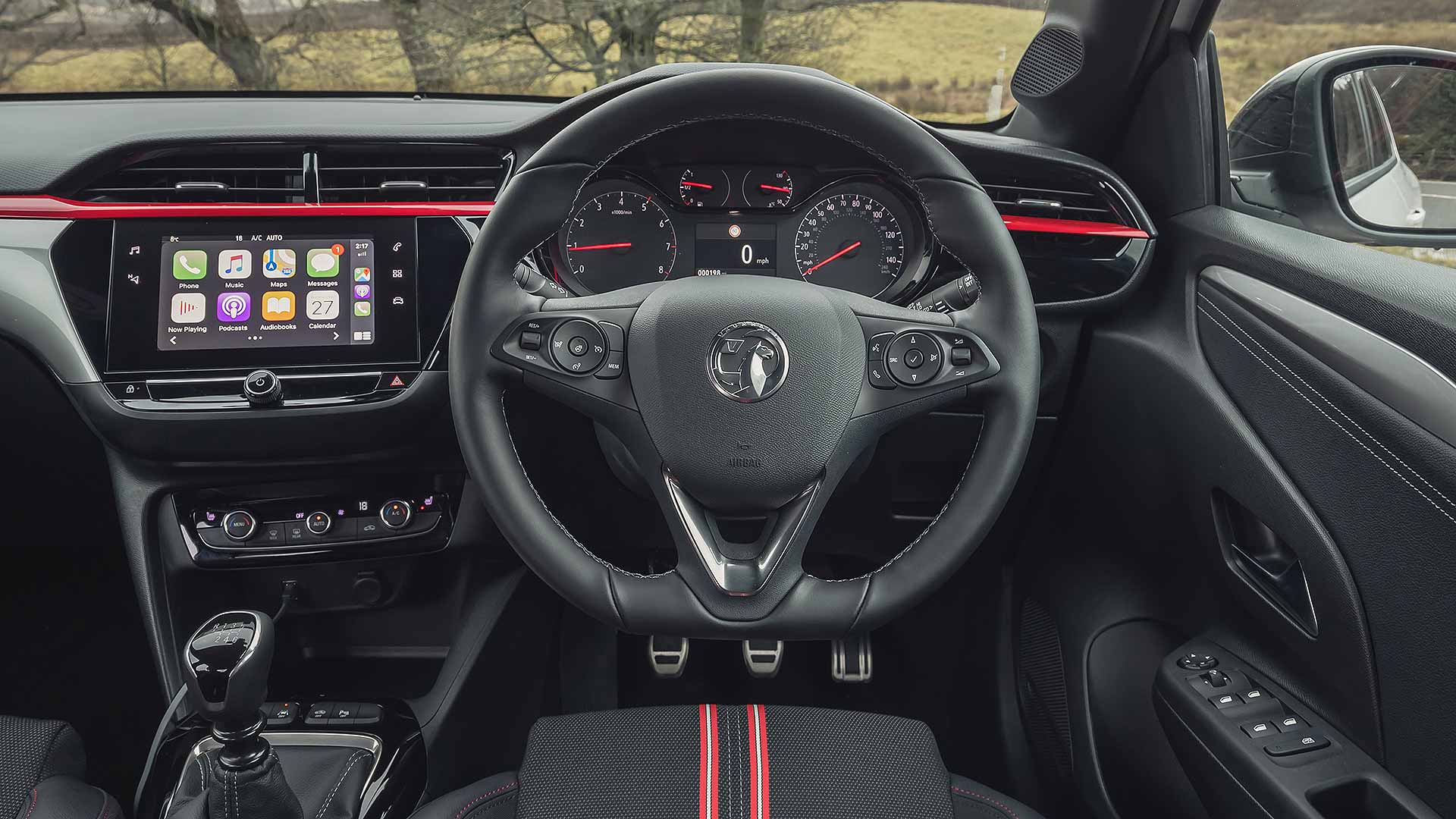
The driving position is fine. The pedals are a bit close, which the driver resolves by sliding the seat back further, to the detriment of rear space. Taller passengers in the rear should sit behind the passenger: the dashboard is hollowed out, so they can slide their seat further forward. This shows off the positives of the rear cabin – comfortable seats, plenty of footroom and adequate headroom.

The 309-litre boot is class-competitive, and the opening is wider than the old Corsa, so it’s more practical.

Niggles? The folding rear seats don’t sit flat, the manual handbrake has an unusually long travel, the door arm rests are narrow and, on our car, both auto headlights and auto wipers seemed to have a mind of their own.
Verdict

The new Vauxhall Corsa is a big step on from the outgoing model. How it drives has been transformed; it’s now thoroughly class-competitive, with an appealing blend of sportiness and comfort. Its refinement and engine response are major plus points and the SRi-specific suspension, styling and seats are all reason enough to choose it.
Vauxhall at last has a front-running supermini again, one that looks smart and feels appealing inside. This is an extremely competitive sector, with some excellent alternatives, but the Corsa is up to job of taking on the Ford Fiesta, Peugeot 208, Volkswagen Polo, Renault Clio and others.
Time to watch the new car sales charts with interest – Ford Fiesta, you may at last have met your match…
I’ve had the pleasure to drive one of these 1.2 T Sri as a courtesy car whilst my 17 plate corsa is being serviced, I am q little upset to be swapping it back to be honest! My corsa is a simple 1.4 and feels like a lawn mower compared to this magical little beast ! My god I put my foot down to get out of a junction as I would in my car to get it to inch forward this little beauty is so responsive my head hit the head rest and we are off it’s extremely fun and a little bit naughty and cheeky! Omg I love it ! It’s much more comfortable too ! I wish I could have it longer but I’m on the look out for a newish Ford ranger but if I was on the look out for another Corsa I would be having one of these!
I have a 2020 Vauxhall corsa nav 1.2 turbo very nice car but is awful on petrol full tank does not last me a week. Bought this car brand new and within 4 months my engine oil light appeared 5 times each time oil was needed. After taking my car to garage found out there was a problem with the timing belt. Brand new car with problems with timing belt.